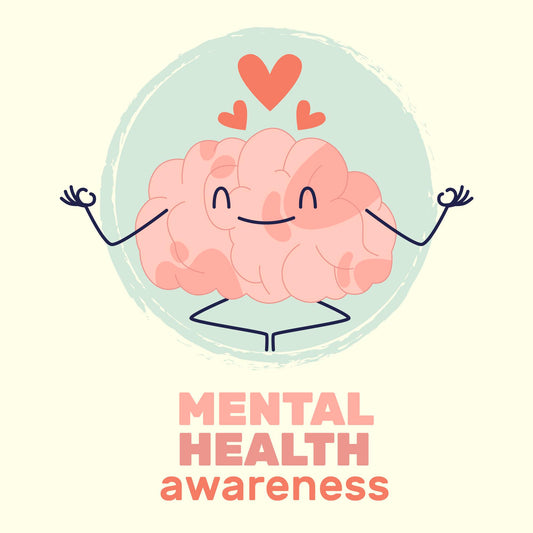Dysmenorrhea refers to the condition of experiencing painful menstrual cramps during menstruation. It's a widespread issue that many women face, with the severity varying from mild discomfort to intense pain that can interfere with daily activities. There are two main categories of dysmenorrhea: primary and secondary.
Primary dysmenorrhea involves common menstrual cramps without an underlying medical condition. These cramps typically start a day or two before menstruation and may last for a few days. The pain is usually felt in the lower abdomen, back, or thighs and is often accompanied by nausea, fatigue, and headaches.
It is usually caused by the release of prostaglandins, hormone-like substances that cause the uterus to contract. The excessive contractions can lead to pain and discomfort. Primary dysmenorrhea typically starts a year or two after a girl begins menstruating and improves with age or after childbirth.
This type of dysmenorrhea usually develops later in life and may be accompanied by other symptoms like heavy bleeding, irregular periods, or pain during intercourse.
Secondary dysmenorrhea, on the other hand, is pain caused by an underlying reproductive system disorder, such as endometriosis or fibroids. This type of dysmenorrhea usually begins earlier in the menstrual cycle and lasts longer than primary dysmenorrhea. The pain might also be more severe and can be accompanied by other symptoms depending on the underlying condition.
Understanding the type of dysmenorrhea is essential for effective treatment, which can range from over-the-counter pain relievers and lifestyle changes for primary dysmenorrhea to more specific treatments addressing the underlying cause in secondary dysmenorrhea.
What are the symptoms of dysmenorrhea?
The symptoms of dysmenorrhea can vary from person to person, but some common signs and symptoms include:
Cramping: Menstrual cramps are the most prevalent symptom of dysmenorrhea. The pain typically occurs in the lower abdomen and can range from mild to severe. The intensity may vary throughout the menstrual cycle, with peak pain occurring during the first few days of menstruation.
Back pain: Many individuals with dysmenorrhea experience lower back pain in addition to lower abdomen pain or cramps. This pain may radiate from the lower back down to the thighs.
Headaches: Some women may experience headaches or migraines during their menstrual cycle, particularly when they have dysmenorrhea.
Nausea and vomiting: In severe cases of dysmenorrhea, individuals may experience nausea and even vomiting. These symptoms can contribute to overall discomfort and make it difficult to carry out daily activities.
Fatigue and weakness: Dysmenorrhea can cause fatigue and weakness due to the body's response to pain and hormonal changes during menstruation.
Diarrhea or constipation: Some individuals may experience changes in bowel movements during their period. This can include either diarrhea or constipation.
Mood changes: Hormonal fluctuations during menstruation can affect mood, leading to irritability, mood swings, or feelings of sadness or anxiety.
It's important to note that while mild cramps and discomfort during menstruation are common, severe pain that significantly affects daily activities may indicate the presence of dysmenorrhea. If you experience persistent and debilitating menstrual pain, it is recommended to consult with a healthcare professional for proper diagnosis and treatment options.

What causes dysmenorrhea?
Dysmenorrhea is the medical term for painful menstrual periods. It is a common condition that affects many women during their reproductive years. There are two types of dysmenorrhea: primary and secondary.
These contractions help the uterus shed its lining during menstruation. However, excessive levels of prostaglandins can lead to stronger and more prolonged contractions, resulting in pain.
These conditions can cause inflammation, scarring, or abnormal growths in the reproductive organs, leading to pain during menstruation.
Other factors that can contribute to dysmenorrhea include:
Hormonal imbalances: Fluctuations in hormonal levels, particularly estrogen and progesterone, can affect the intensity and duration of menstrual pain.
Stress and emotional factors: High levels of stress can increase muscle tension and exacerbate menstrual pain. Emotional factors such as anxiety and depression can also influence the perception of pain.
Lifestyle factors: Poor diet, lack of exercise, and unhealthy habits like smoking or excessive alcohol consumption can worsen menstrual period.
Genetics: Some studies suggest that there may be a genetic predisposition to dysmenorrhea, meaning that if your mother or sister experiences painful periods, you may be more likely to experience them as well.
To manage and reduce the symptoms of dysmenorrhea, here are some tips:
Over-the-counter pain relief: Nonsteroidal anti-inflammatory drugs (NSAIDs) such as ibuprofen or naproxen can help alleviate menstrual pain by reducing inflammation and inhibiting the production of prostaglandins.
Heat therapy: Applying a heating pad or using warm water bottles on the lower abdomen can help relax the muscles and relieve cramping pain.
Exercise and physical activity: Engaging in regular physical activity can help improve blood circulation and reduce menstrual pain. Low-impact exercises like walking, swimming, or yoga can be beneficial.
Stress management: Adopt stress-reducing techniques such as deep breathing exercises, meditation, or engaging in activities that you enjoy to help manage stress levels.
Reduce the consumption of caffeine, sugary foods, and processed foods, as they can contribute to inflammation and worsen symptoms.
Hormonal contraception: Certain hormonal contraceptives, such as birth control pills or hormonal IUDs, can help regulate hormone levels and reduce menstrual pain.
If your dysmenorrhea is severe, persistent, or significantly interferes with your daily activities, it is important to consult with a healthcare professional. They can help diagnose any underlying conditions and provide appropriate treatment options to manage your symptoms effectively.:

What is the main cause of painful periods?
The main cause of painful periods, or dysmenorrhea, often lies in the release of prostaglandins. These are hormone-like substances produced by the uterus. Prostaglandins play a crucial role in helping the uterus contract to shed its lining during menstruation. However, when they are produced in excess, these prostaglandins can cause the uterus to contract more intensely, leading to stronger and more painful menstrual cramps. This excess production is typically what results in the discomfort and pain that many experience during their periods.
Other potential causes of painful periods include:
Endometriosis: This condition occurs when the tissue lining the uterus grows outside of it. It can cause severe pain during menstruation.
Uterine fibroids: Non-cancerous growths in the uterus that can lead to painful periods and heavy bleeding.
Adenomyosis: This condition involves the tissue that lines the uterus growing into the muscular wall, causing pain and heavy periods.
Pelvic inflammatory disease (PID): An infection in the reproductive organs that can cause inflammation and pain.
Cervical stenosis: A narrow cervix that can impede the menstrual flow, leading to pain.
It is important to consult with a healthcare professional to determine the exact cause of painful periods. They can perform a thorough evaluation, including medical history, physical examination like pelvic exam, and potentially recommend further diagnostic tests like ultrasounds or laparoscopy.
Treatment options for painful periods may include over-the-counter pain relievers (e.g., nonsteroidal anti-inflammatory drugs), hormonal contraceptives, lifestyle changes (such as regular exercise, stress reduction techniques, and a healthy diet), and in some cases, surgical interventions.
Why are period cramps so painful?
Period cramps, also known as dysmenorrhea, can be extremely painful for many women. There are several reasons why this occurs.
Firstly, during the menstrual cycle, the lining of the uterus builds up in preparation for a potential pregnancy. If pregnancy does not occur, the uterine lining sheds, leading to the release of prostaglandins. Prostaglandins are hormone-like substances that are responsible for triggering uterine contractions to help expel the lining. Higher levels of prostaglandins can lead to more intense uterine contractions, resulting in stronger and more painful cramps.
Secondly, the release of prostaglandins can also cause inflammation in the uterus, which can further contribute to discomfort and pain. The inflammation can affect nearby nerves and blood vessels, leading to additional sensations of pain.
Additionally, individual factors such as hormone imbalances, underlying medical conditions (such as endometriosis or uterine fibroids), and lifestyle choices (such as poor diet, lack of exercise, or high stress levels) can influence the severity of period cramps.
Fortunately, there are strategies to alleviate period cramps:
Over-the-counter pain relievers: Nonsteroidal anti-inflammatory drugs (NSAIDs) like ibuprofen can help reduce pain and inflammation associated with period cramps. It is important to follow the recommended dosage and consult with a healthcare professional if needed.
Heat therapy: Applying a heating pad or taking a warm bath can help relax the uterine muscles and provide relief from cramps.
Exercise: Engaging in regular physical activity, such as light aerobic exercises or gentle stretching, can help improve blood circulation, reduce inflammation, and alleviate period cramps.
Relaxation techniques: Practicing relaxation techniques, such as deep breathing, meditation, or yoga, can help manage stress levels, which in turn may help reduce the intensity of period cramps.
Dietary adjustments: Consuming a balanced diet rich in fruits, vegetables, whole grains, and lean proteins can support overall hormonal balance and reduce inflammation. Limiting caffeine, alcohol, and processed foods may also be beneficial.

What makes menstrual cramps worse?
Menstrual cramps can be a common and uncomfortable experience for many women during their menstrual cycle. While the severity and duration of menstrual cramps can vary from person to person, there are certain factors that can potentially worsen the pain and discomfort. Here are some common factors that can make menstrual cramps worse:
Poor diet: Consuming a diet high in processed foods, refined sugars, and unhealthy fats can contribute to inflammation in the body, which can exacerbate menstrual cramps. It is important to maintain a balanced diet that includes plenty of fruits, vegetables, whole grains, and lean proteins to support overall health and alleviate menstrual pain.
Lack of exercise: Leading a sedentary lifestyle can lead to decreased blood circulation and muscle tension, which can increase the severity of menstrual cramps. Regular exercise, such as aerobic activities or gentle exercises like yoga, can help improve blood flow and reduce muscle tension, potentially alleviating menstrual pain.
Stress: High levels of stress can have a negative impact on hormonal balance and exacerbate menstrual cramps. Stress can cause increased muscle tension and inflammation, leading to more intense pain. Practicing stress management techniques, such as meditation, deep breathing exercises, or engaging in activities that promote relaxation, can help reduce stress levels and manage menstrual cramps.
Smoking and alcohol consumption: Smoking and excessive alcohol consumption can disrupt hormone levels, constrict blood vessels, and increase inflammation in the body. These factors can contribute to more severe menstrual cramps. It is advisable to quit smoking and limit alcohol intake to reduce the intensity of menstrual pain.
Hormonal imbalances: Certain hormonal imbalances, such as higher levels of prostaglandins (chemicals that promote inflammation), can lead to more intense menstrual cramps. Consulting with a healthcare professional can help identify and address any underlying hormonal issues, potentially reducing the severity of menstrual pain.
Lack of sleep: Inadequate sleep can negatively impact overall health and exacerbate menstrual symptoms, including cramps. It is important to prioritize a consistent sleep schedule and ensure adequate sleep each night to support hormonal balance and reduce menstrual discomfort.
It's crucial to remember that everyone's experience with menstrual cramps can vary significantly. What might exacerbate cramps for one person could have no impact on another. By monitoring your menstrual cycle, noting the symptoms, and observing potential triggers, you can detect patterns that help you make lifestyle choices to lessen the discomfort. If you find that your menstrual cramps are particularly severe or they're heavily affecting your daily life, seeking advice and treatment options from a healthcare professional is always a wise decision.








